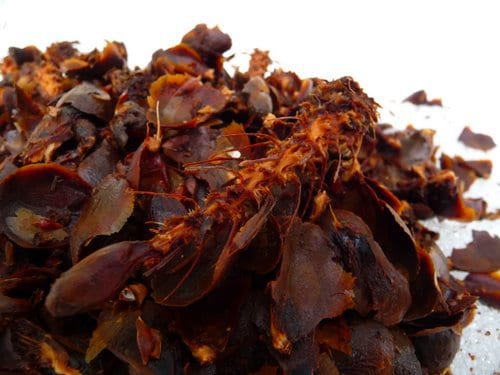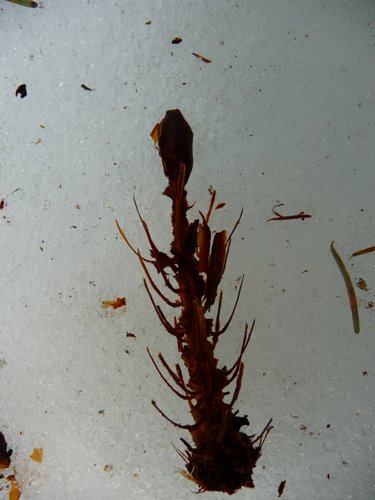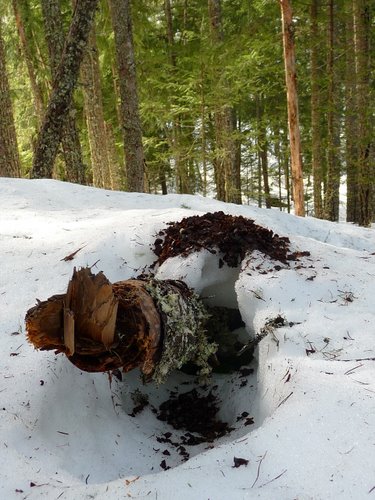Middens abound

I went exploring last week, just to see what I could discover on a cold winter day in February. What I found was abundant evidence of one of my favorite little critters, the Douglas squirrel. Throughout the forest the snow covered ground showed evidence of feasting, perhaps even gluttonous feasting in some places. This feasting was represented by middens. These midden were simply the remains of a squirrels meal, heaps of pine cone scales and cores.

The middens were everywhere: under logs; near the entrance of small, snowy tunnels; at the base of towering Douglas fir trees; on top of melted out nurse logs; in the middle of the trail. At one particularly large midden I counted seven pine cone cores and just a few feet away lay another small midden with four cores.

While at one midden I wondered about the rest of that squirrel’s day. Where had it slept, what else had it consumed from its caches, was it over wintering in a family group?
I consulted my favorite guide book, Cascade-Olympic Natural History by Daniel Mathews, for probable answers. I discovered that Douglas squirrels move from their summer nests built of twig and cedar-bark on limbs to better insulated sites for the winter, often old woodpecker holes. And, unlike smaller rodents, this-years young Douglas squirrels winter in their parents’ nest. Lastly, what else could this squirrel have eaten on a cold winter day? Squirrels dry and store mushrooms, so that’s a possibility. Another possibility would be hazelnuts, which are abundant around the learning center in the fall and could have been cached. Or, it could have been a day of Douglas fir pine cones.
As I headed in from my explorations I felt grateful for winter, squirrels, pine cones and snow; and I wondered, what would I find tomorrow on another cold winter walk in February?

